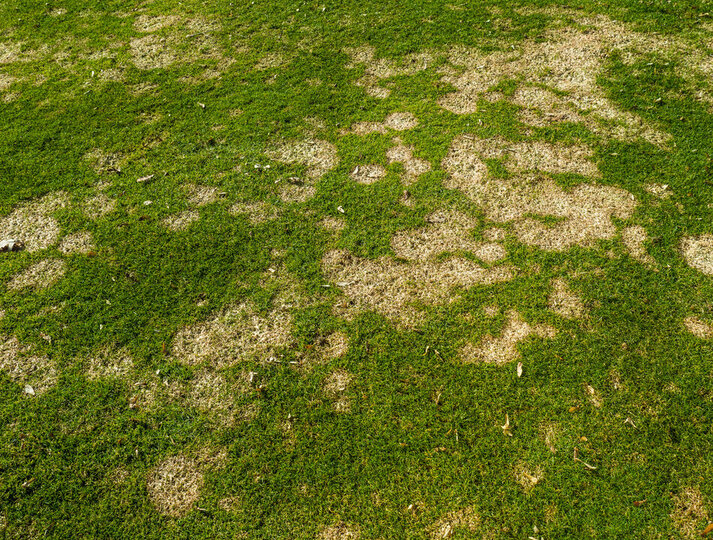Fungus can be the unfortunate factor standing between you and a healthy lawn. Lawn fungus takes many forms, with unsightly results.
Some of the common types of lawn fungus include summer patch, fairy ring, powdery mildew, pythium blight, brown patch, gray snow mold, red thread, dollar spot and rust diseases. To determine what is affecting your lawn, read how to identify lawn and grass disease.
All of these conditions cause less-than-desirable visual effects, and worse – damage to the actual lawn. They can spread, leave your yard more susceptible to other fungus conditions or destroy the grass all the way down to the root.
So, what is a homeowner to do? How do you treat lawn fungus? And what about lawn fungicides?
Let’s start with what causes lawn fungus in the first place.
What causes lawn fungus?
Lawn fungus can take hold for a variety of reasons. Most of the reasons are stressors that make the blades less hearty and prone to infection:
- Humid conditions and overwatering, where there is too much moisture sitting on the grass
- Drought conditions, with not enough water
- Use of too much fertilizer
- Mowing the grass too low, which removes too much of the blade, weakens it and enables fungus to take hold
What is fungicide?
Often, homeowners search for a fungicide treatment. A quick online search will find a variety of products advertised to treat lawn fungus. But is this the best route?
Fungicides can be effective, but they also can destroy surround grass, or simply be too harsh. When applying any chemical to your lawn, it is important to do so armed with the appropriate knowledge.
There are commercially available fungicides such as Daconil, and a variety of fungus control products from other well-known lawncare brands. Most products can be sprayed or applied as granules. Some formulas are more like dust. Make sure you read the directions and follow them carefully.
Copper fungicide is another option, as this metal can control fungus, but also can contaminate surrounding soil. Use this option carefully, and only if you are confident in your knowledge about application.
How do you maintain the health of your lawn?
While a fungicide can be used after your grass has sustained damage, the best option for controlling lawn fungus is to avoid it in the first place.
There are definite steps you can take to ensure the health of your lawn and to help ward off fungus.
Fertilization is key to giving your grass the boost it needs to stay in tip-top shape.
Watering in the appropriate amounts can help your lawn survive droughts and remain in robust health.
Mowing frequently (ensuring you do not cut the grass too low) also helps your lawn thrive and look great.
Treating insects that can wreak havoc on your grass also plays a part in a healthy lawn.
Trust your lawn to the experts.
If you want a beautiful lawn, less work and no fungus, Grass Master offers full-service lawn care from specialists who understand the needs of Northeast Ohio grass. Start thinking about having the best lawn ever, and consider our residential lawn care services. you’ll have the lawn you want and less work achieving it. Contact Grass Master today.

